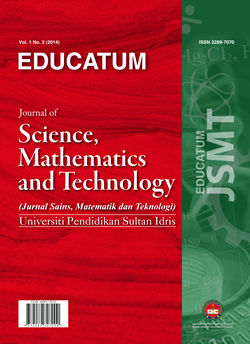Factors That Influence Information Security Behaviour of Home User
DOI:
https://doi.org/10.37134/ejsmt.vol9.2.14.2022Keywords:
Information Security Behaviour, Home User, Security, Threats, EthicalAbstract
Pandemic Covid-19 situation has enforced most companies imposes their staff to work from home basis as mode of operational. Due to that the number of home computer users is increasing faster than ever. This scenario indirectly highlighted home users' information security as an important field to be investigated. This is not only a matter of securing home users' personal and work information, but also because internet users who access from home provide an ideal breeding ground for security hackers targeting organisations and individuals. Therefore, this paper aims to investigate the factors that influence the information security behaviour of home user. As for this study, 201 respondents among employees in an ICT agency are being analyzed using quantitative approach through the online survey questionnaires. From the findings, it has been concluded that the perceived severity, perceived susceptibility, response efficacy, cues to action and perceived benefit has been identified as the factors that influenced the information security behaviour of home users. Perceived severity was found to be the factor that influenced how users react to implement or not the security safety measures while accessing information. Although respondents do not feel they are possible targets for security threats, they recognize that the result of a security breach would have a significant impact on them. It might be irrational to suppose that any security experience, knowledge or history background by individuals is the way they act at home. It is therefore hoped to see policy makers or authorised bodies design and implement security awareness campaigns and programs so that users are effectively informed about threats and the skills they can use to mitigate security threats and thereby improve the security climate of users. Where the majority of IS research based on behavioral IS within an organizational framework, "security of home users" demands greater attention from researchers in order to provide an improve analysis and proper practice on home user’s security behavior.
Downloads
References
Anderson, C. L. & Agarwal, R. (2010). Practicing safe computing: A multimethod empirical examination of home computer user security behavioral intentions. MIS Quarterly, 34(3), 613-643.
Cilliers, L. (2020). Wearable devices in healthcare: Privacy and information security issues. Health information management journal, 49(2-3), 150-156.
Creswell, J. W., & Sinley, R. C. (2017). Developing a culturally-specific mixed methods approach to global research. KZfSS Kölner Zeitschrift für Soziologie und Sozialpsychologie, 69(2), 87-105.
Gundu, T. (2019). Acknowledging and reducing the knowing and doing gap in employee cybersecurity compliance. 14th International Conference on Cyber Warfare and Security, ICCWS 2019, 94–102.
Hooper, V., & Blunt, C. (2020). Factors influencing the information security behaviour of IT employees. Behaviour & Information Technology, 39(8), 862-874.
Johnston, A. C., & Warkentin, M. (2010). Fear appeals and information security behaviors: An empirical study. MIS Quarterly: Management Information Systems, 34(SPEC. ISSUE 3), 549–566. http://www.jstor.org/stable/25750691%5Cnhttp://about.jstor.org/terms
McGill, T., & Thompson, H. (2017). Old risks, new challenges: Exploring differences in security between home computer and mobile device use. Behaviour & Information Technology, 36 (11), 1111-1124. Doi: 10.1080/0144929X.2017.1352028
Ng, B. Y., Kankanhalli, A., & Xu, Y. (Calvin). (2009). Studying users’ computer security behavior: A health belief perspective. Decision Support Systems, 46(4), 815–825. https://doi.org/10.1016/j.dss.2008.11.010
Ng, Y., & Rahim, M. (2005). Association for Information Systems AIS Electronic Library (AISeL) PACIS 2005 Proceedings Pacific Asia Conference on Information Systems (PACIS) A Socio-Behavioral Study of Home Computer Users’ Intention to Practice Security. http://aisel.aisnet.org/pacis2005/20
Sekaran, U., & Bougie, R. (2010). Research method for business: A skill building approach, 5th edition. In United States: John Wiley & Sons Inc.
Tsai, H. Y. S., Jiang, M., Alhabash, S., Larose, R., Rifon, N. J., & Cotten, S. R. (2016). Understanding online safety behaviors: A protection motivation theory perspective. Computers and Security, 59, 138–150. https://doi.org/10.1016/j.cose.2016.02.009
Vance, A., Lowry, P. B., & Eggett, D. (2013). Using accountability to reduce access policy violations in information systems. Journal of Management Information Systems, 29(4), 263–290
Woon, I., Tan, G., & Low, R. (2005). A Protection Motivation Theory Approach to Home Wireless Security, ICIS, 2005Proceedings. Paper 31. Wu,
Williams, K. C. (2012). Fear appeal theory. Research in Business and Economics Journal, 5, 1- 21.
Zhang, S., Gerhart, W. C. M., McLaughlin, A. C., & Allaire, J. C. (2017). Predicting computer proficiency in older adults. Computers in Human Behavior, 67, 106-112 https://doi.org/10.1016/j.chb.2016.11.006
Downloads
Published
Issue
Section
License
Copyright (c) 2022 Mohd Sharulnizam Kamarulzaman, Shamila Mohamed Shuhidan, Abdul Jalil Toha

This work is licensed under a Creative Commons Attribution-NonCommercial-ShareAlike 4.0 International License.





